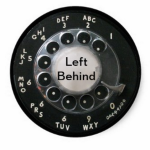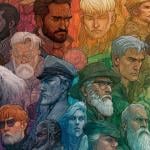
As we continue our consideration of John Chapter 9, the Pharisees and the proto-Christian Gnostics would have deeply disagreed about how to look at the world, and we bump into this division in our story. These worldview disagreements were very similar to those that later Rabbinical Judaism, which grew out of Pharisaical Judaism, had with Gnostic Judaism. These were not primarily a struggle between Christianity and Judaism. Only insofar as Christianity or Judaism took Gnostic forms would it have conflicted with Rabbinical Judaism.
Welcome Readers! Please subscribe to Social Jesus Here.
(Read this series from its beginning here.)
Anti-Judaism was already present by this time among Gentile Christians, but this story and stories like it in the gospel of John have a long history of inspiring Christians to see all of Judaism as negative through negative stereotyping and the label Pharisees. The schools of the Pharisees that followed Hillel had much in common with early Christian communities that looked more like the Jesus of Matthew, Mark, and Luke. This is important because of the atrocities Christians have been responsible for against the Jewish community that can be traced back to interpretations of stories like this week’s. With stories like this, Christians have characterized the struggle as between Christians and Jews rather than between the Pharisees of that time and all forms of Gnosticism, Christian or Jewish.
The very first thing we bump into in the story is how the Gnostics explained so much concrete suffering in our world. The question “Who sinned?” betrays a worldview that assumes that all misfortune is somehow deserved. Many forms of early Jewish and Christian Gnosticism were not purely monotheistic but dualistic: they believed the material world was made by one God who had done the best they could but still created a world that involved suffering and pain. Christian gnostic sects framed Jesus as a Gnostic savior who came from a second Divine entity and saved the world through gnosis or knowledge (see John 17:3).
If John’s gospel was not written by those who were themselves proto-Gnostics, they definitely wrote a gospel that was especially vulnerable to being valued and interpreted by Christian Gnostics later.
In John Chapter 9, our story this week includes a few other dualistic binaries. We’ll discuss those last.
(Read Part 3)













